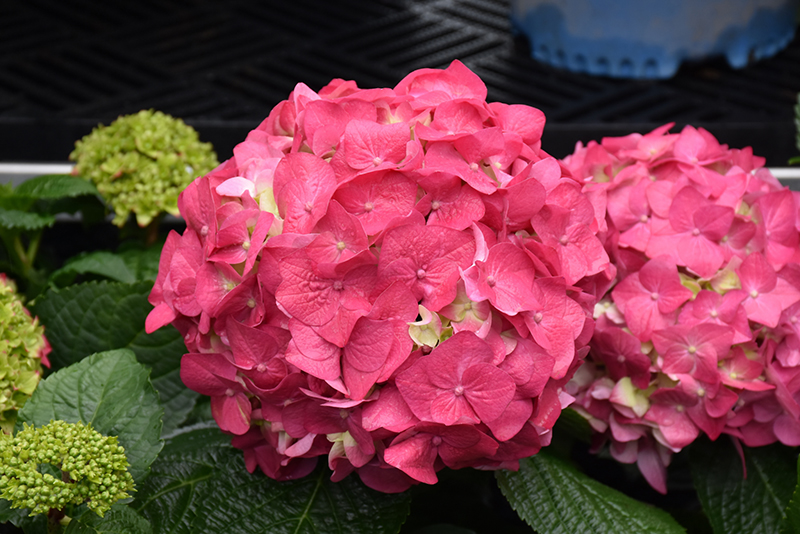Hydrangea, Summer Crush Hydrangea macrophylla 'Bailmacfive' Height: 3 feet Spread: 3 feet
Sunlight:
Hardiness Zone: 4a Other Names: French Hydrangea, Bigleaf Hydrangea Group/Class: Endless Summer Series Brand: Bailey Nurseries Description: An absolute breakthrough for this much-desired species, this spectacular summer-bloomer is very hardy, and produces large, intensely colored raspberry red or neon purple globe-shaped flowers; a compact growing selection with dark green glossy leaves Ornamental Features Hydrangea, Summer Crush features bold balls of ruby-red flowers with red overtones at the ends of the branches from early summer to early fall. The flowers are excellent for cutting. It has forest green deciduous foliage. The glossy pointy leaves do not develop any appreciable fall color. Landscape Attributes Hydrangea, Summer Crush is a multi-stemmed deciduous shrub with a more or less rounded form. Its relatively coarse texture can be used to stand it apart from other landscape plants with finer foliage. This shrub will require occasional maintenance and upkeep, and should only be pruned after flowering to avoid removing any of the current season's flowers. It has no significant negative characteristics. Hydrangea, Summer Crush is recommended for the following landscape applications; Planting & Growing Hydrangea, Summer Crush will grow to be about 3 feet tall at maturity, with a spread of 3 feet. It tends to fill out right to the ground and therefore doesn't necessarily require facer plants in front. It grows at a slow rate, and under ideal conditions can be expected to live for approximately 20 years. This shrub does best in partial shade to shade. It prefers to grow in average to moist conditions, and shouldn't be allowed to dry out. This plant should be periodically fertilized throughout the active growing season with a specially-formulated acidic fertilizer. It is not particular as to soil type, but has a definite preference for acidic soils. It is highly tolerant of urban pollution and will even thrive in inner city environments, and will benefit from being planted in a relatively sheltered location. Consider applying a thick mulch around the root zone in both summer and winter to conserve soil moisture and protect it in exposed locations or colder microclimates. This is a selected variety of a species not originally from North America. Special Attributes Grows best in Eastern Washington and Oregon Desert climate, when shaded from 11 am to 7 pm.![]()
![]()
![]()
![]()
![]()
![]()
![]()
![]()
![]()
![]()
![]()


